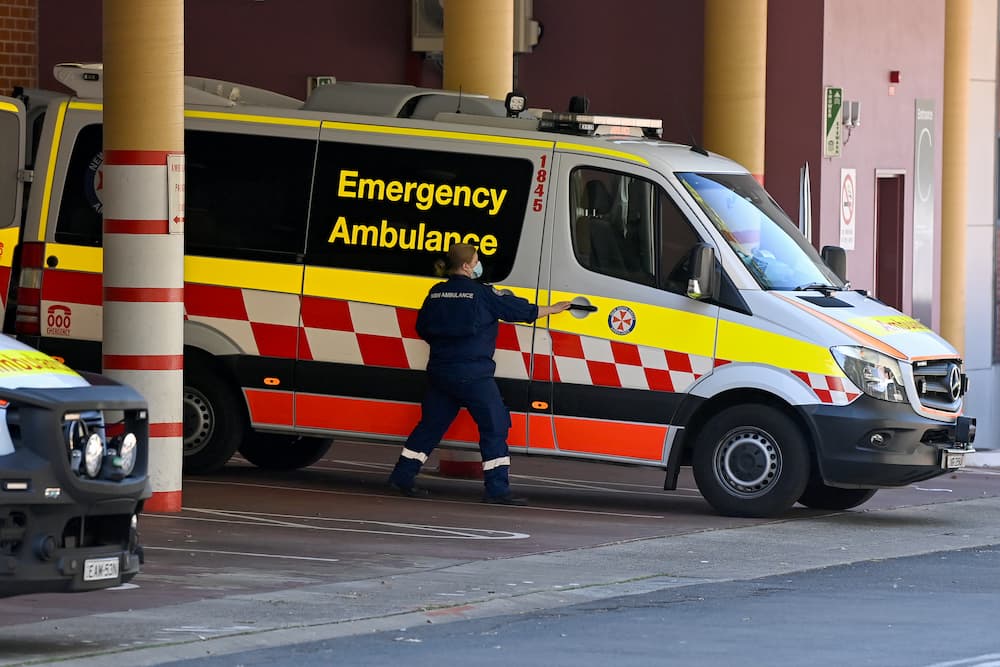NSW has recorded 16 COVID-19 deaths, the most in a single day since the pandemic began, along with 30,062 new infections.
The state’s previous deadliest reporting day was October 1 last year, with 15 fatalities.
There are currently 1927 virus patients in NSW hospitals, 151 of them in intensive care and of those, health authorities say 38 are in need of ventilation.
Changes to workplace restrictions and transport timetables have been announced in a bid to ease the impact of rising case numbers on the delivery of critical services.
The latest deaths include eight women and eight men in their 60s, 70s, 80s and 90s.
Officials say 14 of the fatalities were Sydney residents, mostly from the city’s west and southwest. One was from the NSW Central Coast and one from the state’s south coast.
Authorities have announced changes to workplace restrictions and transport services in a bid to ease the impact of the virus on critical services.
Food logistics and manufacturing staff furloughed as close contacts will be allowed to leave self-isolation to attend work if they have no symptoms as of Sunday.
NSW Health says they will only be eligible to do so if their employer determines their absence poses a high risk of disruption to the delivery of critical services or activities and they are unable to work from home.
They will also have to wear a mask and comply with risk-management strategies including daily RATs.
The new rules apply to critical workers in biosecurity and food safety, the production and manufacturing of food, beverages, groceries, cleaning and sanitary products, and food logistics, delivery and grocery fulfilment.
Train and bus timetables will also be adjusted from Monday to help provide services while managing staff shortages.
Transport for NSW operations chief Howard Collins says enhanced weekend timetables will run across most of the network.
“Like many industries hit by COVID, there are currently hundreds of transport staff impacted and this number is expected to fluctuate going forward,” he said.
Patronage is around 70 per cent compared to pre-pandemic levels and approximately 30 per cent less than this time last year.
The latest virus case numbers were registered from 98,986 test results, down on the almost 117,000 processed on Friday which yielded a further 45,098 infections.
That number was more than 6000 fewer than similarly afflicted Victoria. However the Victorian tally, which was more than twice its previous day’s total, was inflated by a backlog of cases registered via the state’s new online rapid antigen test (RAT) reporting capacity.
NSW is yet to launch a similar system but is expected to make the switch by mid-week – at which point case numbers are expected to surge afresh.
The state opposition says it’s essential to know sooner where positive RAT cases are, to ensure doctors, nurses, hospital cleaners and other frontline workers are in the right place, particularly for regional areas.
New modelling shows NSW hospitalisations are expected to hit 4500 in late January.
The worst-case scenario places the peak above 6000, which is within the state’s current capacity, Premier Dominic Perrottet says.
He has fended off criticism concerning his decision to ease restrictions last month as Omicron took hold, saying the strain required a different response.
“It is much, much less severe and the approach we’ve taken is the right approach,” he said on Friday, while reintroducing bans on singing and dancing at pubs.
Get all the latest Canberra news, sport, entertainment, lifestyle, competitions and more delivered straight to your inbox with the Canberra Daily Daily Newsletter. Sign up here.



